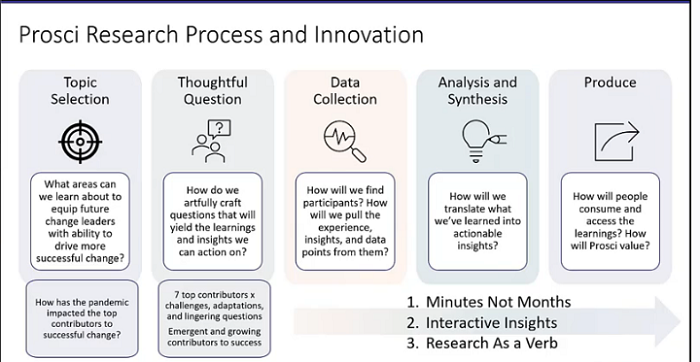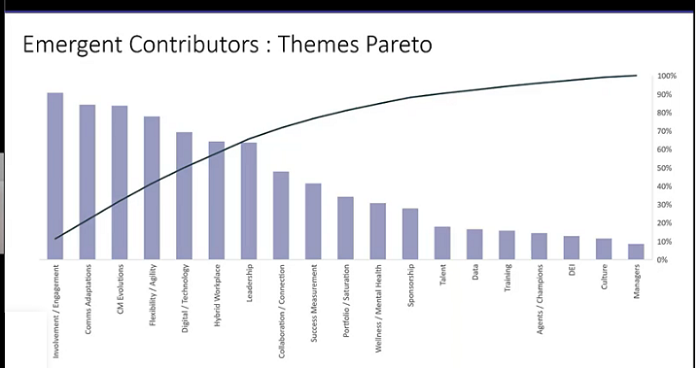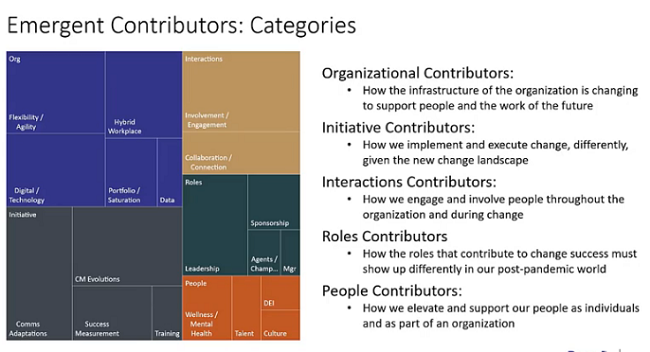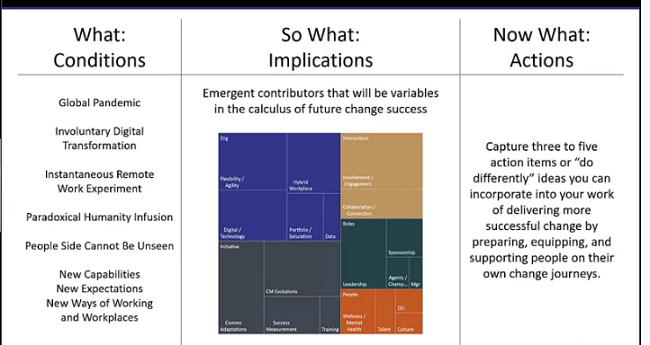Research Methodology
Prosci is the peak research body into change management and the diagram below explains their process.

(source: Tim Creasey, 2023b)
In early 2023, Prosci was conducting research around the impact of the pandemic (starting 2020). There were 3 main questions they were asking:
“…- What aspects of the change are the most different today than before the pandemic?
- What aspects of the change are least different today than before the pandemic?
- What were the biggest surprises to you about how change has changed because of the pandemic?...”
Tim Creasey, 2023b
Its research (2023) has found that the emegent contributors were:

(source: Tim Creasey, 2023b)
Top 7 contributors to change management performance are still the same as before the pandemic, ie
i) Sponsorship
ii) Communications
iii) People management
iv) Employee engagement
v) Structured approach to change management
vi) Adequate dedicated resources
vii) Integration with project management
For each of these 7 contributors, more questions were asked to identify themes; for example, questions around sponsorship were
"...- After the pandemic, how different is mobilising active and visible executive sponsorship as a contributor to change success?
- What are the unique challenges in mobilising active and visible executive sponsorship following the pandemic?
- What are the specific, most impactful adaptations made to mobilise active and visible executive sponsorship in the post-pandemic world?
- What questions do you still have about mobilising active and visible executive sponsorship in a post-pandemic world?..."
Tim Creasey, 2023b
This resulted in identifying 10 themes:
i) involvement/engagement (this is linked with people management and the human side of change; alignment before empowerment so that people know where they are going)
ii) communication adaptations (using multiple channels, ie going beyond written or spoken word to experiential; using ever-evolving digital tools; need to be clear and direct; in bite-size chunks; two way; transparency and honesty.
iii) change management evolution (broader acceptance of change management: fit-for-purpose methodologies; strategically aligned; increased enterprise maturity; formalised structure; just-in-time and timely; expanding individual capabilities and skills)
iv) flexibility/agility (adaptability; resilience; momentum; mindset such as growth; confidence)
v) digital/technology (technology adoption; digital literacy; AI/automation, cyber security, virtual reality)
vi) hybrid workplace (future of work; return to the office; virtual organisation)
vii) leadership (sponsorship; trust; transparency; focus; vision; alignment; purpose)
viii) collaboration/connection (linked with involvement and engagement; people want connection and collaboration plus teamwork from the office environment)
ix) success measurement (importance of clear definition, measurement of progress and accountability of results)
x) portfolio/saturation (this is linked with wellness/mental health; talent; diversity and inclusion; culture).
Another way of expressing this is as emergent contributors and their

(source: Tim Creasey, 2023b)

(source: Tim Creasey, 2023b)
